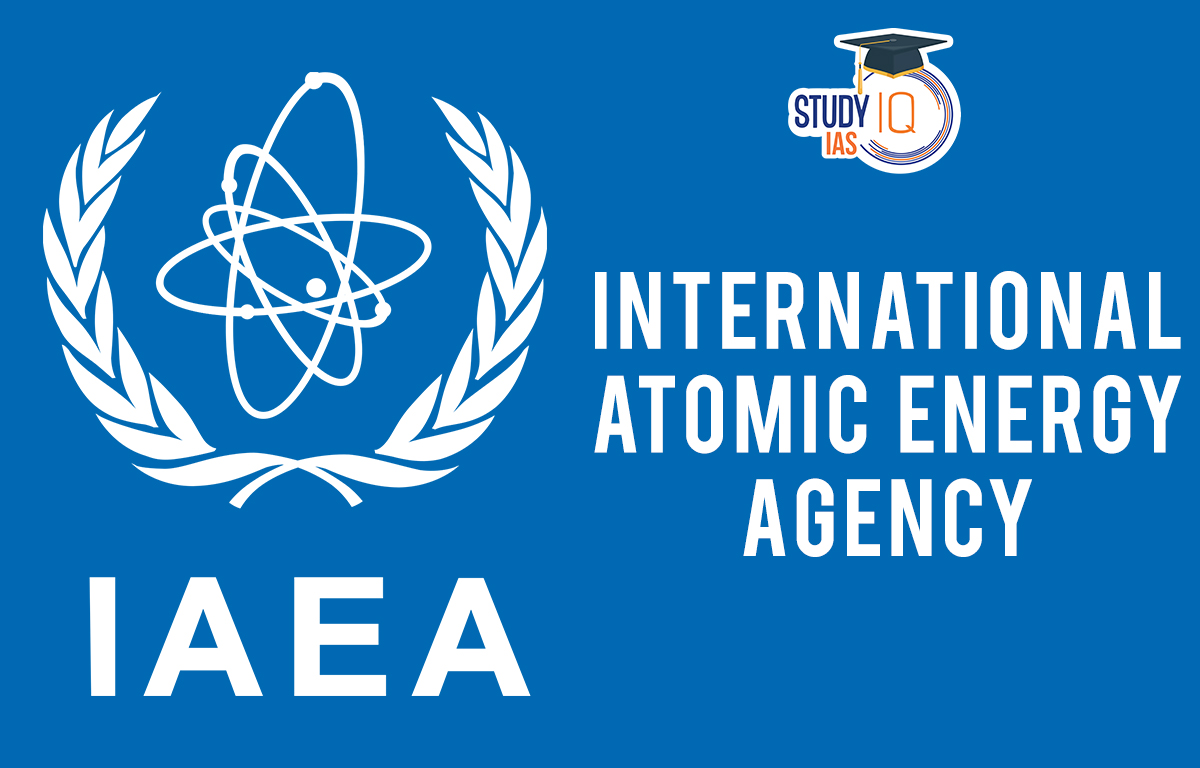Table of Contents
International Atomic Energy Agency
The International Atomic Energy Agency (IAEA) is the primary intergovernmental forum for international collaboration in nuclear science and technology. IAEA promotes the use of nuclear science and technology for benign, secure, and safe purposes, advancing both global peace and security and the Sustainable Development Goals of the United Nations. The UPSC Syllabus includes the International Atomic Energy Agency as a significant subject. The UPSC Mock Test can help candidates prepare for the exam with more precision.
International Atomic Energy Agency Introduction
International Atomic Energy Agency is its complete name. It runs programmes to maximise the benefits of nuclear technology to society while ensuring its peaceful use and functions as the foremost intergovernmental forum for scientific and technical cooperation in the peaceful use of nuclear energy in the world.
The International Atomic Energy Agency (IAEA) is a UN agency that collaborates with member nations and partners to support the safe, secure, and peaceful uses of nuclear science and technology, advancing both international peace and security and the Sustainable Development Goals of the United Nations. Both the Security Council and General Assembly of the United Nations receive findings from the International Atomic Energy Agency (IAEA). Vienna, Austria, is home to the IAEA’s main office. The responsibility of maintaining the 1970 Nuclear Non-Proliferation Treaty’s tenets falls to the IAEA.
International Atomic Energy Agency History
The United Nations General Assembly in 1953 served as the impetus for the creation of the International Atomic Energy Agency. Former US President Dwight Eisenhower gave a speech to “Atoms for Peace,” the organisation’s previous moniker. It was officially founded in 1957. The IAEA’s mission is to advance secure, reliable, and benign nuclear technologies. There are currently 175 users.
Saint Kitts and Nevis and Tonga, who entered the IAEA in 2022, are the newest members. In 1957, India joined as a partner. In 2005, the IAEA and Mohamed El Baradei, its previous Director-General, shared the Nobel Peace Prize. Although the IAEA is a separate international entity, it submits yearly reports to the UNGA. Geneva, New York, Toronto, and Tokyo serve as its regional headquarters.
International Atomic Energy Agency Member
There are currently 175 users in total. Some of the most recent members are listed below; the year indicates the year of participation. India has been a founder member of the IAEA since 1957. India joined the IAEA Response and Assistance Network (RANET) in January 2020. A group of nations known as the Response and Assistance Network (RANET) works to lessen the effects of nuclear or radiological crises.
International Atomic Energy Agency Secretariat
Vienna International Centre, in Vienna, Austria, serves as home to the IAEA Secretariat. The Director-General and six Deputy Director-Generals oversee the Agency’s six principal divisions. The IAEA’s general employees and professionals make up its Secretariat.
International Atomic Energy Agency Governance Model
General Conference
It gathers once a year and is made up of IAEA member nations. Typically, the yearly general meeting takes place in September. Vienna will host the IAEA’s 66th General Conference from September 26 to September 30, 2022.
Board of Governors
There are 35 people on the council. Five times a year, the Board of Directors meets. The board reviews the organisation’s program, financial statements, and budget for the IAEA General Conference and makes suggestions. The publication of the IAEA’s safety guidelines is also approved, along with membership applications and safeguards agreements. The chart below lists the 35 Board members for 2021–2022:
| S. No. | Members |
| 1. | Argentina |
| 2. | Australia |
| 3. | Austria |
| 4. | Brazil |
| 5. | Burundi |
| 6. | Canada |
| 7. | China |
| 8. | Colombia |
| 9. | The Czech Republic |
| 10. | Egypt |
| 11. | Finland |
| 12. | France |
| 13. | Germany |
| 14. | Guatemala |
| 15. | India |
| 16. | Ireland |
| 17. | Japan |
| 18. | The Republic of Korea |
| 19. | Libya |
| 20. | Malaysia |
| 21. | Mexico |
| 22. | New Zealand |
| 23. | Pakistan |
| 24. | Peru |
| 25. | Poland |
| 26. | The Russian Federation |
| 27. | Senegal |
| 28. | Slovenia |
| 29. | South Africa |
| 30. | Spain |
| 31. | Switzerland |
| 32. | The United Arab Emirates |
| 33. | United Kingdom |
| 34. | United States of America |
| 35. | Viet Nam |
International Atomic Energy Agency Function
The IAEA’s role is to support and encourage the investigation, creation, and use of nuclear technologies for benign purposes. to set up and manage safety measures to make sure that the IAEA’s research, development, and other activities aren’t used for hostile purposes.
The nations should uphold their non-proliferation obligations under the Nuclear Non-Proliferation Treaty (NPT) and other international agreements “with a view to preventing the diversion of nuclear energy from peaceful uses to nuclear weapons or other nuclear explosive devices.” The three key areas of activity for the IAEA are safeguards and verification, science and technology, and safety and security.
International Atomic Energy Agency Safeguards
A State’s legal obligation not to divert nuclear material from peaceful nuclear activities to nuclear weapons or other nuclear explosive devices can be independently verified by the IAEA using this collection of technical safeguards. States agree to the use of such measures by signing safeguards agreements with the IAEA, which the IAEA is authorised to create and administer.
These safeguards are founded on evaluations of how accurate and comprehensive a nation’s nuclear material and nuclear-related activities have been reported. Visits and continuous monitoring, site inspections, and evaluation are some of the verification methods. The two types of measures are essentially implemented in accordance with safeguards agreements that are in effect with a State.
Verifying State reports of declared nuclear material and operations is the first step. The second set allows the IAEA to confirm that declared nuclear material has not been diverted and to guarantee that no undeclared nuclear material or activities exist in a State.
International Atomic Energy Agency Issues
No UN member country’s authority may be overridden by the International Atomic Energy Agency. The five regular members of the UNSC, who collectively possess some of the largest nuclear arsenals in the world, are never criticised by the IAEA for their nuclear hegemony. Additionally, the IAEA has failed to stop power politics from influencing nuclear talks.
International Atomic Energy Agency UPSC
Within the framework of the United Nations, the IAEA is a stand-alone institution. Both in the UPSC Prelims and UPSC Mains, the IAEA is commonly brought up in questions. The subject is covered in Current Affairs and takes up a sizable part of GS Paper 2, which highlights the key international organizations, agencies, and fora, as well as their organization and mission. Students can read all the details related to UPSC visiting the official website of StudyIQ UPSC online Coaching.


 Nilgiri Biosphere Reserve, Map, Climate,...
Nilgiri Biosphere Reserve, Map, Climate,...
 Silicon Photonics Enables Low-power AI A...
Silicon Photonics Enables Low-power AI A...
 Genome India Project (GIP), Aim and Sign...
Genome India Project (GIP), Aim and Sign...





















